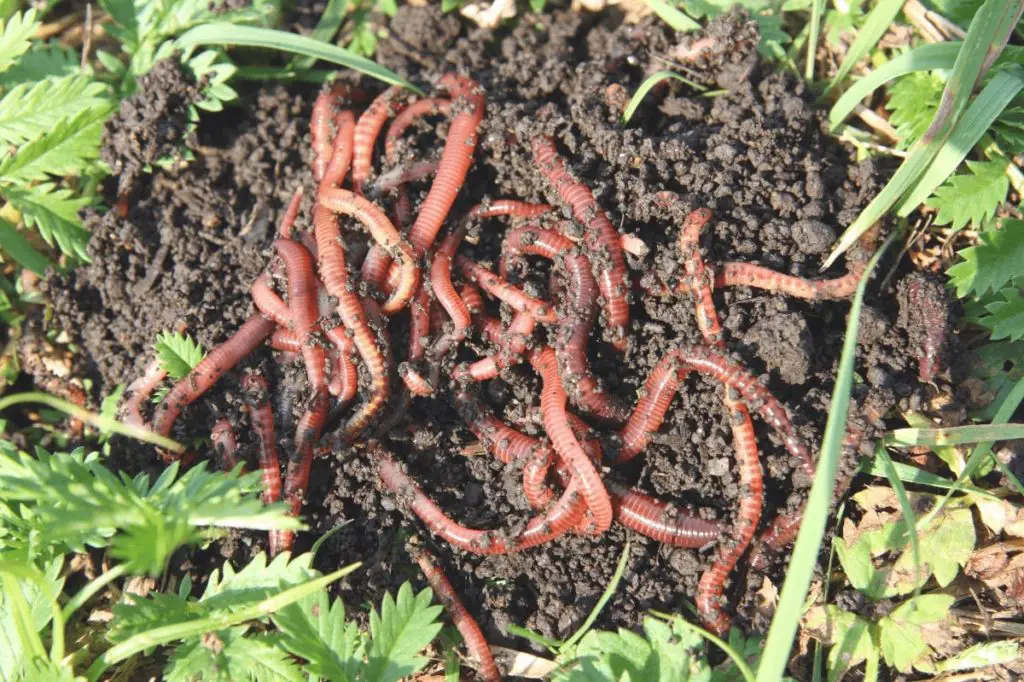Is composting in an apartment balcony something you’re interested in?
It isn’t uncommon to think that it’s too hard to compost while living in small quarters.
The opposite is true, however. If you’re aware of composting and its importance, then you should know that you can accomplish your goal with balcony compost.
In this article, you’ll learn everything you need to know about composting in an apartment balcony.
Remember that composting isn’t anything more than the decomposition of organic materials. It’s the deliberate process of controlling this decomposition so that you end up with materials that help bring nutrients back into the soil.
We recommend two methods for you to compost in your apartment balcony.

Let’s first discuss vermicomposting.
You’ll use worms to produce what’s called “vermin-compost” when employing the vermicomposting process. Simply put, worms help you create your desired compost. You’ll often hear vermicomposting referred to as:
The compost produced from earthworm digestion and waste results in rich, organic matter that contains a multitude of helpful microorganisms and nutrients.
Vermicomposting works well for apartment composting because it doesn’t require much space.
This process for creating compost comes with many benefits. Two benefits that most people enjoy about it include:
Once you get started with vermicomposting, you’ll become amazed at the way your worm farm continues to do the work for you. It’s also a fun project to get your kids involved with as you teach them about composting, organic waste, and gardening.

The first thing you need is a worm bin. You can find a wooden box to use as your compost bin or purchase a specially-designed plastic worm bin. The bin needs holes to provide oxygen for the worms.
Gather coconut coir, shredded cardboard, or shredded newspaper for the bedding. Coffee grounds or builder’s sand helps develop grit for the worms to digest. Find a small piece of burlap.
Lastly, choose between one of these three types of worms:
You want about one square foot of surface area per one pound of food scraps to place in your compost tumbler. To determine the size of your compost bin, measure how much kitchen waste or food scraps you can generate each week. Weigh your food scraps after one week of collection.
Set up your worm bin on the balcony and ensure there’s enough room underneath it for a collection tray. Some store-bought worm bins come with collection trays.
Place some shredded newspaper in a separate container and moisten it with water. Put down some newspaper at the bottom of your first working tray in the worm composter. This prevents the bedding material from falling through the holes.
Add the moist bedding material on top of the newspaper. Keep it fluffy. Avoid matting it down too much. Add a little bit of the builder’s sand or coffee grounds.
Add in about one pound of worms to get started with apartment composting. Feed them food scraps about one to two times per week to start. Bury the food scraps about an inch under the bedding. Place the moistened burlap over the worms to keep everything moist.
Make sure the compost bin gets plenty of shade. To get the best results with your balcony compost project, ensure your worms aren’t exposed to temperatures above or below 40 degrees to 80 degrees Fahrenheit. Enjoy the finished compost pile!
Recommended reading: The Ultimate Guide to Vermicomposting
The bokashi method also works great for apartment composting.
The Bokashi compost method is a Japanese technique used with anaerobic fermentation. Traditional composting is an aerobic process. You turn the pile to provide the compost more oxygen.
Bokashi composting doesn’t require oxygen. That’s why it’s called an anaerobic composting process.
Bokashi’s roots go back to the Asian culture and its traditional farming methods. It uses a mixture of microorganisms and organic materials to produce adequate compost. You can achieve valuable organic waste that improves gardening efforts.
It’s become quite popular across America because it doesn’t require much space and works perfectly for an apartment balcony. Rather than using a larger bin, you can use the Bokashi method with a smaller bucket.

Most natural living stores and garden stores sell Bokashi buckets. They come as kits that provide the unique bucket plus other required materials. These other replenishment materials include:
The unique Bokashi bucket includes a spigot and air-tight lid. The spigot works to drain away liquid. You must keep the draining procedure to prevent a foul smell from building up in the bucket.
Start by adding a layer of kitchen scraps at the bottom of the bucket. You can use eggshells, bits of unused celery, cucumber, and other kitchen scraps you’d otherwise throw away. Even cheese, meat, and small bones work inside a Bokashi bucket.
Layer the starter material that comes with the pre-purchased Bokashi kit over the first layer of scraps. Stir the scraps and starter material together. Use about a third of the bag for each bucket.
Place a flat object, such as a plate, on top of the compost. Keep adding layers until the bucket is full. Then, put the lid on tight. Place the bucket on your balcony for about two weeks to ferment fully.
Every few days, open up the spout to drain out the rich, compost tea. Dilute the tea at a rate of one tablespoon to one gallon of water. Use that mixture on your garden and house plants.
You might want to buy two buckets so you can use one for the compost tea while allowing the other one to finish its fermenting process.
Recommended reading: The Ultimate Guide to Bokashi
Let’s handle a few frequently asked questions.
Yes, you can compost on an apartment balcony. The key is to select a method such as Bokashi or vermicomposting because these methods don’t require much space. If you have a balcony that doesn’t get too much direct sunlight, then it makes for an excellent way to compost.
Use the Bokashi method if you don’t want to use worms for your composting needs. The Bokashi procedure requires only a small bucket, starter material, kitchen scraps, and your balcony. You can achieve rich compost within two weeks of getting started.
It takes about three to six months to complete the vermicomposting process. That’s why most bins come stacked with several containers. As you add scraps to the top levels of containers, the bottom containers complete the process. The Bokashi procedure only takes about two weeks to finish.
Composting reduces any need to use harsh chemical fertilizers. It also keeps our landfills free from organic matter.
Your compost shouldn’t smell terrible. If it does, then you’ve probably allowed the pile to become too wet. Other factors that cause bad smells include lack of aeration or an imbalance between nitrogen and carbon.
Are you excited to start composting in an apartment balcony? Your next action step is to decide between vermicomposting or Bokashi. Then, get your materials together and start composting. You’ll get better at the process the more you do it until you become a composting pro!





We provide a platform supported by gardening enthusiasts to share unique experience and knowledge.
We’ve pledged 5% of sales to the program which help more families have opportunity to have garden.
Every action we make has an impact on planet. Learn more about Million Compost Movement.
Join facebook community to connect, share passion and get support when you need.
Keep in mind that we may receive commissions when you click our links and make purchases. However, this does not impact our reviews and comparions. We try our best to keep things fair and balanced, in order to help you make the best choice for you.
As an Amazon Associate, we earn from qualifying purchases.
Sign up for gardening tips, activism awareness, exclusive offers and more!
© Garden Guidepost

Gardening tips, activism awareness, exclusive offers and more!